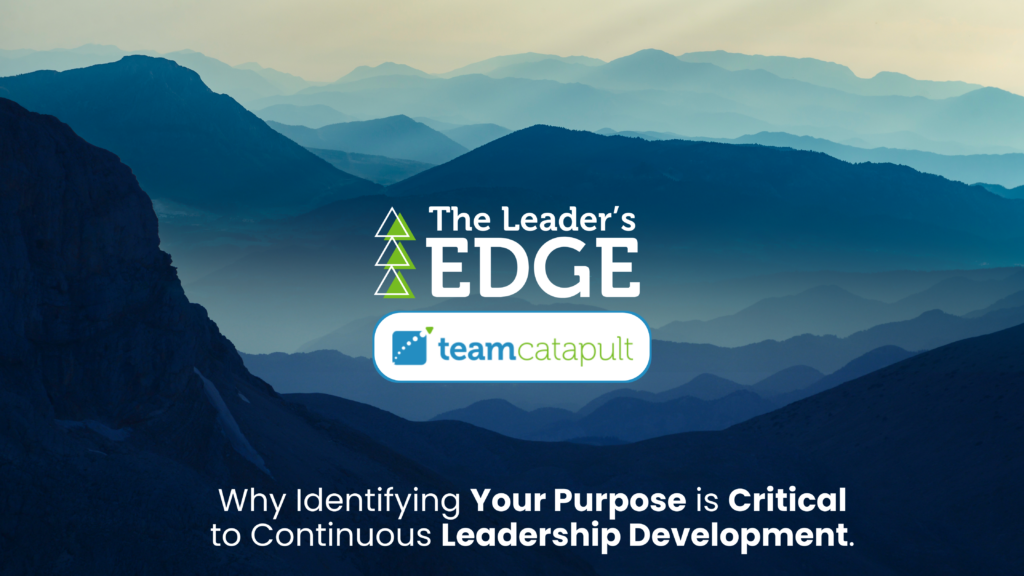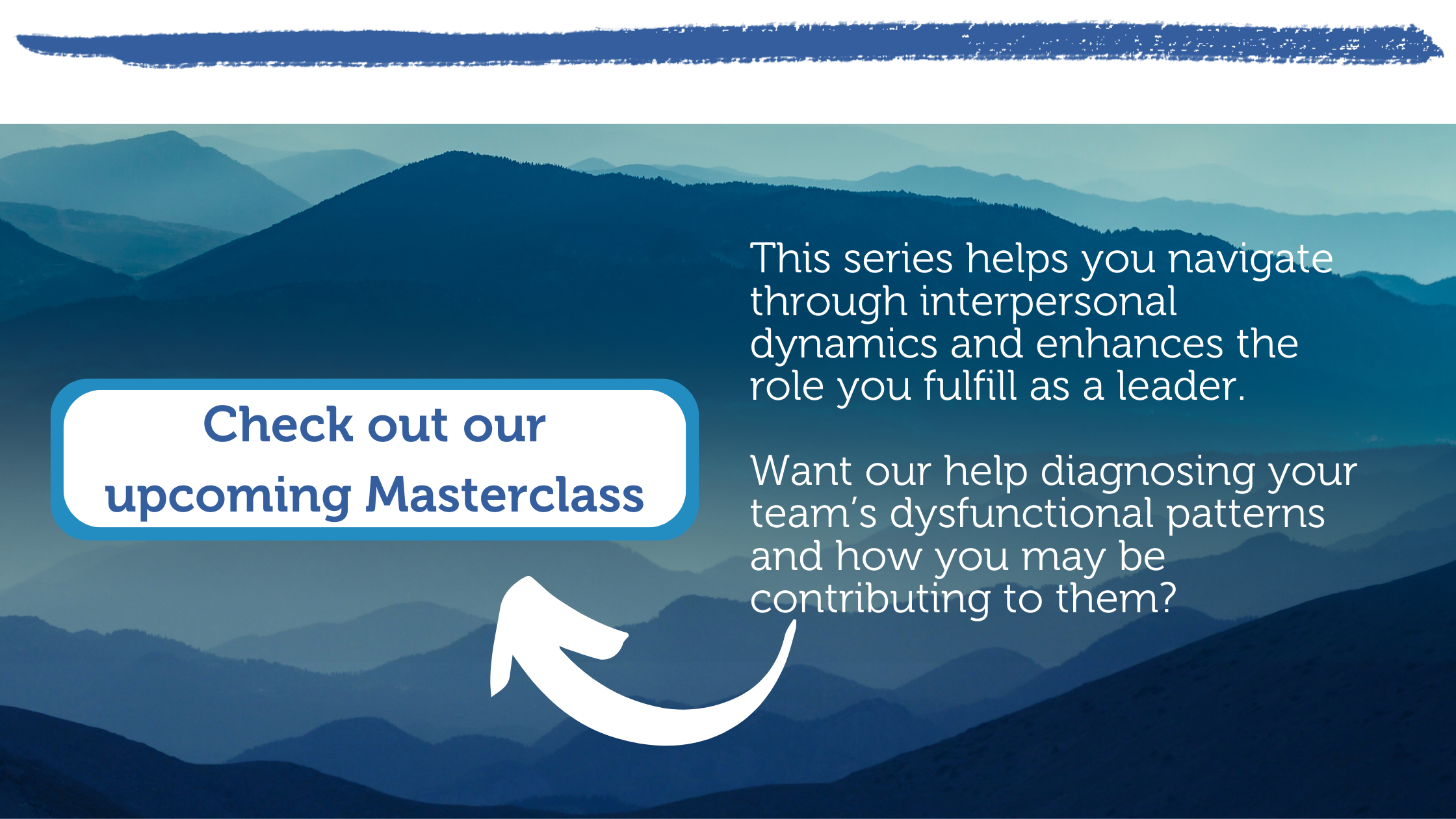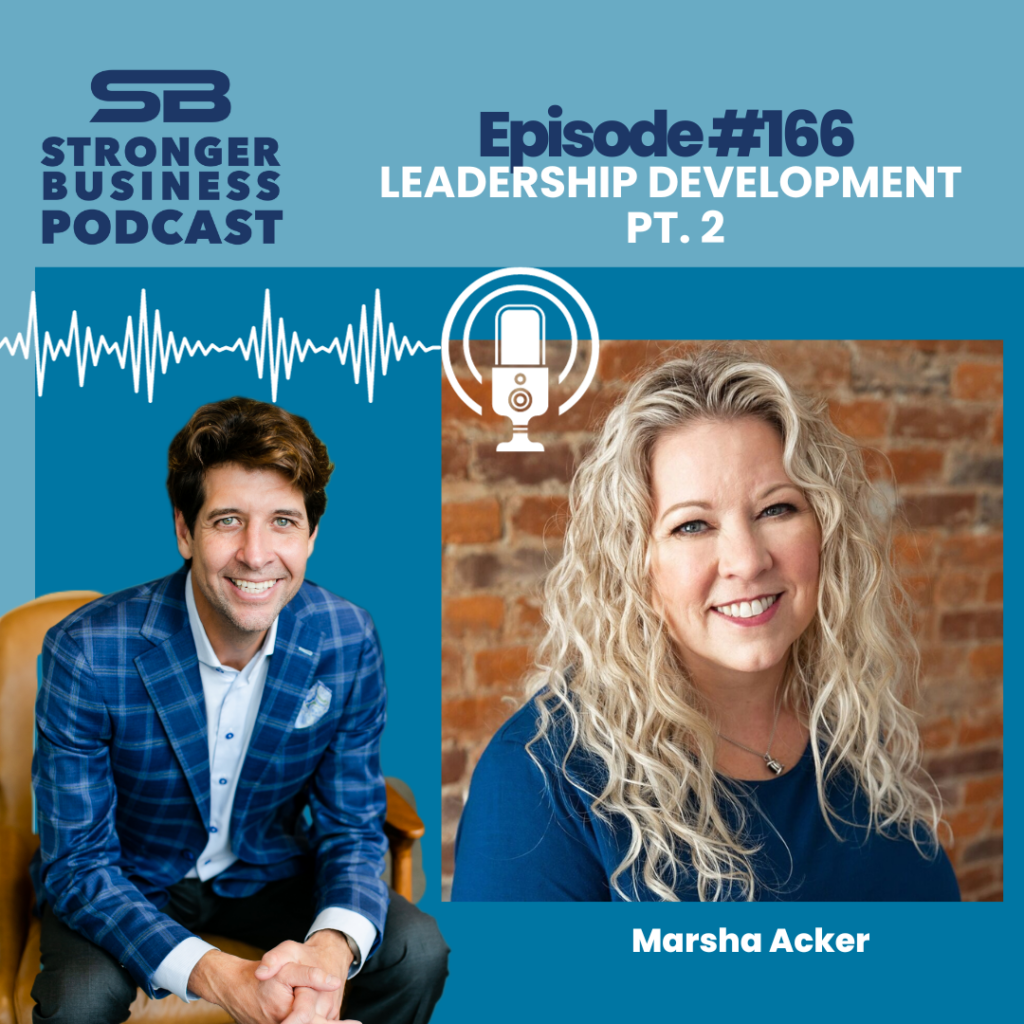Time is where change happens
More often than not, participants in TeamCatapult programs reflect that, at the beginning, they didn’t fully understand what the outcome of their leadership development program would be — and that not having a clear understanding of the pay-off made it feel really difficult to participate in months-long leadership development work. Specifically, that not knowing made it difficult to invest the time and resources when they had clear deadlines and priorities demanding their attention.
Early on in our programs, there’s often a sense of impatience. Can’t we just speed up the process a bit? Can’t we just onboard the learning and go back to our teams armed with new thinking and see immediate results?
It’s often not until the halfway point of a program (or even beyond) that participants start to recognize the results. It can be four or five months into a nine-month engagement when it starts to really sink in that the investment of time IS where meaningful, sustainable change happens. That the commitment to staying in the process is HOW we develop the self-awareness and others-awareness to be able to show up differently as team leaders — and help our teams function better as a whole.
Investing intentional time is how we learn to surface the important conversations as a group and hold the space to work through difficult material effectively.
It’s a bit like the idea of saving for retirement. When we put away money for the future, it can feel like we are sacrificing the things that our money could be doing for us right now to invest in a future that has no guarantees. Some people commit to retirement savings anyways, and others prioritize the here and now only to have deep regrets about their lack of forward thinking.
Investing in your leadership and your capacity to change behaviors — your own and your team’s — means investing time and resources that could be expended in the here and now instead. It means rethinking what “high-priority” means.
Is the next deadline the highest priority, or is it the ability to change a team’s culture and behaviors to meet all future commitments more effectively, more collaboratively, and with better results?
What leadership development program participants learn is that it’s not actually an either/or. It’s an opportunity to make progress and move forward in ways that are unfamiliar or radically different from what has previously seemed to get results. It can feel unnerving, scary, and intensely vulnerable. And it takes a leap of faith.
Welcome back to Horizons Tech
For those of you just joining us, The Leader’s Edge is a multi-part series showcasing a leadership development program initiated at Horizons Tech, a fictionalized organization struggling to capitalize on their potential.
This series is dedicated to exploring participants’ experiences when making the time and energy investment in their communicative competence as leaders — meaning, their ability to navigate complex behavioral patterns and interpersonal dynamics on teams. The goal is to reflect some of the “ah-ha” moments and see changes that participants might experience as they commit to a program when the process and outcomes may not be fully clear to them yet.
In this week’s episode, we’re exploring the idea of what makes staying in the work worth it — especially when things get difficult or confronting. Today, we’re meeting up with Mike and Angie, two leaders at Horizons Tech who took a very different path when it came to investing their time and energy in developing their leadership.
Two leaders, two choices: the challenge of learning as a results-driven leader
“Mike”
Have you ever been offered what seemed like a fabulous opportunity for growth and development and said “yes” without hesitation — only to find yourself frustrated or challenged by how the learning was taking shape?
Well, that’s what happened to “Mike.” He had just received a promotion to a senior leader position in Horizons Tech. He was well respected, sought after as a problem solver, and recognized for producing results — and he found his sense of his priorities deeply challenged by the leadership program.

Mike was still young in his role as leader when he was tapped by peers he respected to be part of the new leadership development program. The program was focused on helping leaders grow their range in their leadership by developing their communicative competence — a foundational skill for leaders today who are navigating the high stakes of uncertainty and change. The sponsor of the program was the COO, Dara, who had a vision for team-building at a senior-leader level. The goal was to help participants learn to navigate complex cross-organizational needs and politics more effectively by focusing on behavioral change.
Now, part of what Mike was known for was his spontaneity and action orientation. These traits had been serving him really well. They were how he delivered results in his role — by pivoting as needed, focusing on results, being reliable, and just “getting things done.” He’d also had previous experiences with professional development. It was learning that he found valuable. So it was no surprise, really, that he responded to his peers’ invitation with an easy “yes.”
On the first day of the program, Mike was all in. He was hopeful about the process, looking forward to the learning, and self-aware enough to name some of the challenges he expected to face in this program. His biggest challenge, he knew, would be feeling the weight of all his responsibilities while committing to a program that consisted of three rounds of 3-day workshops separated by six weeks in between. Those six weeks would include the ongoing work of practicing the concepts addressed in the workshops, bringing the new learning back to the team, individual leadership coaching, and consistent journaling to explore and grow through the process.
When Mike stepped into the first day of Session 1, he was enthusiastic. He was intrigued by the idea of communicative competence as the key to creating meaningful behavior change and cultivating highly effective teams. He was interested in what he was learning:
- There are different structures of communication that you can actually see and name
- These structures have a direct impact (whether spoken or unspoken) on interpersonal dynamics and the overall outcome of the conversation
- His own assumptions and beliefs as a leader were affecting the team culture in ways he might not be aware of — yet
But as the day continued, he felt his other priorities sneaking in. He started getting distracted by the pressures he was feeling about his new role — especially the looming deadlines. By the end of the day, he began to seriously wonder how he would find time for this development work.
He was not alone.
On Day 2 of the first session, the group dynamics began to emerge in this group of leaders. And — as often happens — this was the day when the group as a whole started voicing various concerns about what their participation would do for them. What were they really getting for their time?
Angie, a senior leader for another key vertical in the organization, asked, “What’s the purpose of this development learning? How will I actually use what I’m learning here with my teams?”
Vijay, a senior leader who reported to Mike, built on her question. “Yes, when will we get to the part where we learn how to bring this learning back to our team?”
Mike, who had remained quiet for a while, finally spoke. In a very calm way, he said, “I’m just not sure I can commit to this program. It’s six months long and I don’t see how this will fit into my current set of priorities. There’s a lot being asked of me, and I’m realizing this does not feel like the best use of my time or my highest priority.”
Mike’s voice and opinion carried weight in the group, and now that he had offered his perspective, the group dynamic shifted as everyone considered how they felt about his words. Some remained silent, while several others joined Mike in voicing concerns about the amount of time the program would require them to be “out of the office” or away from their daily tasks.

And sure enough, on the day before the second session was to start six weeks later, Mike sent an email saying he was dropping out and would not be participating. He felt too much pressure in the new role and really needed to focus all of his time on a series of crises that were emerging in the organization.
What I could see in that moment was that Mike was cheating himself out of the experience. Moreover, he was onboarding a very specific set of invisible costs. When he left the program, he lost the opportunity to really see and understand how specific patterns and behaviors —his own and his team’s — were impacting their collective ability to reach their full potential. Yes, they were able to get things done, but they were losing the chance to explore how to get things done so much better.
Mike was focused on the short-term pressures, and he lost the chance to create and engage with a bigger vision for what he could help accomplish as a leader.
I can’t help but wish he’d made a different choice for himself. So often, it’s the experience of working with and moving through material that challenges our sense of things — including our very sense of ourselves! — that we experience the most personal growth. Sticking with it through the impatience and frustration is where the real breakthroughs happen.
Investing time and patience in the challenging and unfamiliar, especially when the status quo seems to be working well enough, takes a leap of faith. This is where things change in our thinking, where we unexpectedly catch sight of a well-worn behavior pattern, and where we have the space to realize that our intent in our behavior — no matter how well meaning — may be having a negative or unwelcome impact on others.
Still, like everything, it has to be an investment you are willing to make, and Mike simply chose not to.
“Angie”
What might have happened if Mike stayed?
To explore this question, let’s turn to Angie, who stayed in the program despite her initial misgivings.
Angie had been invited to join the program by the organization’s COO, Dara, who knew Angie played a critical role supporting many of the line organizations on a daily basis. Dara knew Angie to be someone who navigated internal politics exceptionally well most of the time. But she thought Angie would benefit from having deeper relationships with her peers — an idea that Angie felt unsure about from the get-go.
Like Mike, she just wasn’t sure if the pay-off at this point would be worth the time spent. She was deeply aware of her other responsibilities and the difficulty of feeling like she was “setting them aside” to participate. Moreover, as the program unfolded on Day 1, she encountered material that she had heard before. It sounded familiar, and at times she was tempted to mentally check out. She found herself feeling impatient with the time spent away from her team.
But, unlike Mike, she found a reason to stay.
Angie wound up having an experience the very first day of the program that was pivotal for her — and it challenged her deeply. It started when the group began to talk about patterns of communication and how they impact work. Angie’s ears perked up as a peer shared a story about a leader who was stuck in a pattern of making decisions without consulting others (a dynamic Angie later learned was called a “closed operating system” in the language of Structural Dynamics). In the story, the leader had a toxic effect on the team culture.
As she listened, Angie quickly began to see herself in the story. As she processed her peer’s words, her mind drifted to a recent encounter in her own team where she became increasingly frustrated by the lack of progress the team was making on a critical deadline. Her reputation was riding on being able to get the product released on time, and she simply could not understand what was taking so long. One day, she showed up at a meeting angry — blaming the team, venting her frustration, and then, without further conversation, simply told them what she thought they should do. She told them to “make it happen” and invited no further conversation about it.
In the end, the team did deliver on time, and up until this very moment she felt accomplished in the leadership she displayed that day. After all, there comes a time when you have to just make a decision and put some pressure on the team to make things happen — right?
But now she was listening to a peer describe the impact this behavior had on others, and she had the bone-chilling realization that she might be acting exactly like the kind of leader she never wanted to be.
She realized she had never really taken the time to pause and think about what might have been getting in her team’s way as they struggled toward their deadline. What was causing them to be slower about this particular task? Was it a one-off issue or a problem that could rear its head again at any moment to bog the team down and risk future deadlines? She simply didn’t know, because she had never taken a step back to inquire.

Moreover, she now understood with a sinking feeling that it was highly possible she had left a wake of misunderstandings or bad feelings in her wake — and that these might also show up to haunt the next task the team needed to accomplish.
In other words, Angie was catching sight of the invisible costs she was risking by not exploring and addressing her impact on her team.
When Angie first committed to the leadership development program, she wasn’t sure where it was going. Even after part one, she didn’t have complete clarity. But what she did recognize was that she clearly had learning to do as a leader if she wanted to lead in a way that aligned with her values. This became her purpose, and she was willing to stay with it and trust the process.
It wasn’t easy. She found it difficult to speak or contribute much. She silently battled with herself: she wanted to make some changes in her leadership approach but was feeling shame and guilt about catching sight of her past behavior. It took her a while to feel willing to share any of her thinking with the group.
But, unlike Mike, who caught sight of his discomfort and decided the program was not his priority, Angie made up her mind to push through and see what might come if she committed with curiosity.
And over the course of the next six months, she found herself engaging more with the program. By the second part, she even shared her story about not liking the impact she realized she was having on her team (a topic we’ll explore in more detail in future episodes of The Leader’s Edge). She dove deep into the concepts and the reflective work, and she engaged her whole team in the process.
Over time, as we’ll see later in this series, she made incredible strides in her leadership. And as she scaled her learning with her team, they were able to move forward faster than they ever had in the past.
Development takes purpose

When we find ourselves in situations that challenge, perturb, or frustrate us, chances are we are in “high stakes” mode. This is when our intentional and confident behaviors (the ones we express when the stakes are low) go out the window. Instead, the triggered, high-stakes behavior takes over. We are less in control of ourselves. We are more reactive; less intentional. We have less choice because our triggers have been flipped and our internal survival narratives have taken over.
One of the major high-stakes behaviors is to abandon a situation. This is a mode that can happen for me, for example, if I’m not watching out. If I dislike something, I become frustrated with it and then abandon it — I head back to the more comfortable space of how I like things.
Here’s one thing I will never know: did Mike leave the program or did he abandon the program? Did he make an intentional decision to leave well, or did he abandon ship the night before because he felt triggered or challenged by the idea of rethinking his priorities and exploring new dimensions of leadership?
The thing about human developmental processes — including leadership development — is that it’s never a straight, predictable path. It looks different for everyone. We will all start at different places and see different sites along the way. And, more often than not, what we are seeking as we enter is very seldom what we actually need, especially if we are looking to bring about change — change in an organization, change in others, or change in ourselves.
Are you looking to be comfortable and to have all your questions answered immediately? Or are you willing to explore to find your own answers? Are you willing to trust that everything you are thinking, feeling, and experiencing is data that allows you to learn something about yourself? Are you willing to see the feeling of frustration or impatience as something to learn instead of something to fix or make go away?
Development, by its very nature, can and will be confronting. If it’s not, then you are not growing. You will only be repeating your same patterns. And, for better or worse, true insight and growth only happen when we stay in the soup and choose to invest our time.



























